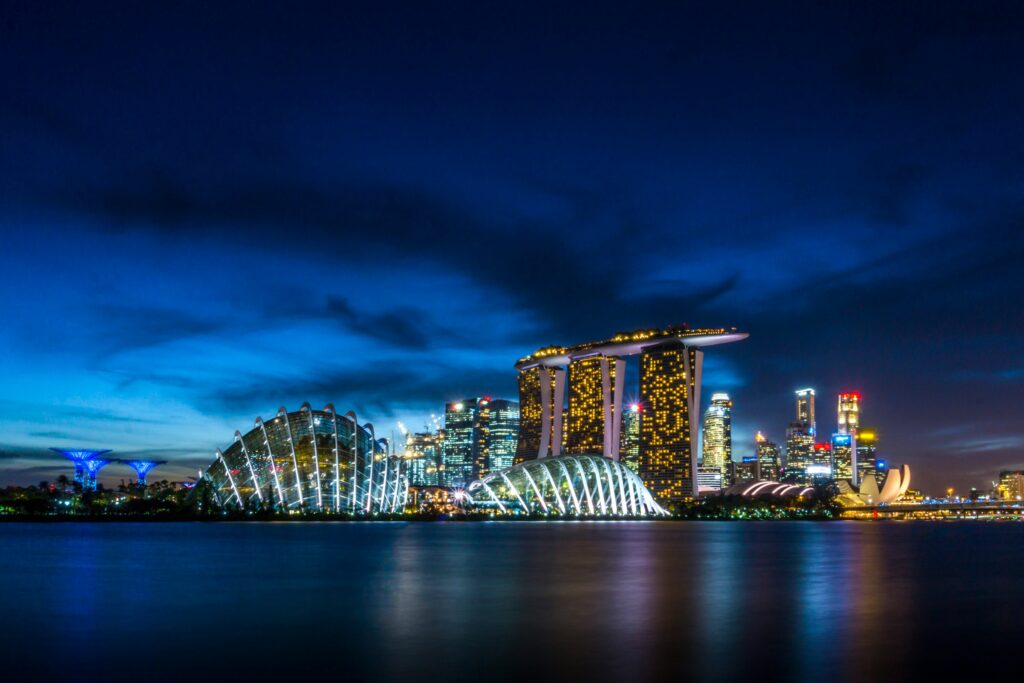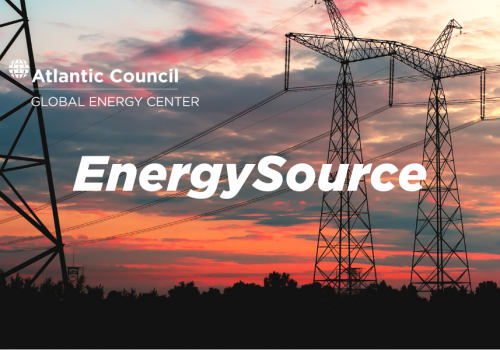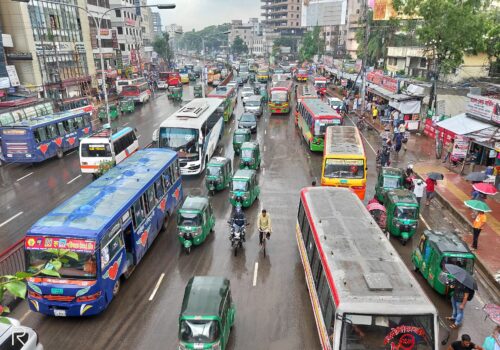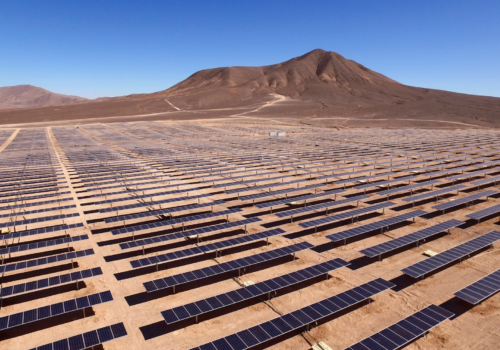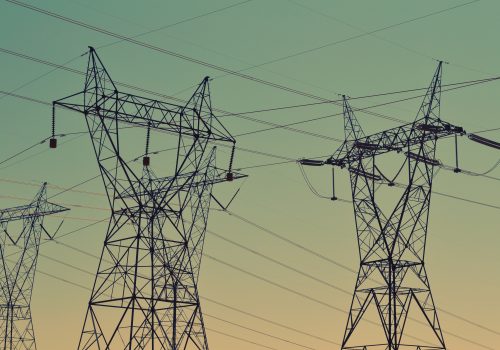As Southeast Asia accelerates its energy transition, the Atlantic Council Global Energy Center (GEC) is engaging with stakeholders across the region to develop the policy and business strategies needed to rapidly finance and deploy clean energy technologies. This includes collaborating with Singapore International Energy Week 2024 (SIEW) as a Strategic Insights Partner. There, the GEC is supporting SIEW TechTable 2024 to build a platform for stakeholders to engage with these cutting-edge technologies and discuss their deployment at scale in order to advance Southeast Asia’s energy future.
Southeast Asia is undergoing a profound transformation in its energy landscape, driven by rapid economic growth, urbanization, and a pressing need to reduce carbon emissions. Regional energy demand is expected to surge by two-thirds by 2040. Ensuring reliable and affordable supply for rapidly expanding populations requires an accelerated deployment of cleaner, more sustainable energy sources.
STAY CONNECTED
Sign up for PowerPlay, the Atlantic Council’s bimonthly newsletter keeping you up to date on all facets of the energy transition.
From highly industrialized nations like Singapore to developing economies like Vietnam, each country faces distinct energy security and sustainability concerns. But across the region, there is a common need for an integrated transition strategy that supports economic growth, enhances energy security, and aligns with global climate objectives. Central to achieving this transition is the adoption of innovative clean technologies.
Technologies like carbon capture, utilization, and storage (CCUS), battery storage, enhanced geothermal systems, and small modular reactors (SMRs) are essential to ensure a reliable, resilient, and clean energy supply. With strategic investments and robust policy support, these technologies are poised to play a pivotal role in Southeast Asia’s energy future as the region faces rising demand and climate risks.
Diversifying the energy mix for resilience
By diversifying their energy sources with emerging technologies, Southeast Asian countries can enhance energy security while progressively reducing emissions. Finding the right balance between conventional and clean energy while leveraging innovative technologies is critical for maintaining resilience during the transition.
Natural gas is seen as a “transition fuel” for many Southeast Asian nations. While still a fossil fuel, natural gas produces nearly half the carbon dioxide emissions of coal and can be integrated with renewable sources of power generation. Investments in liquefied natural gas (LNG) infrastructure are increasing across the region. Singapore is positioning itself as a major LNG trading hub in Asia. Pavilion Energy and Sembcorp Industries have already made significant investments in LNG bunkering services, providing cleaner fuel options for shipping and ensuring Singapore’s energy security.
As countries rely on natural gas for immediate energy needs, emerging clean technologies are providing a pathway for achieving the deeper decarbonization needed for long-term sustainability. Clean energy technologies can diversify the energy mix, reduce emissions, and ensure resilience as Southeast Asia transitions to a more sustainable energy future.
Innovations supporting the region’s transition
Battery storage systems are critical for stabilizing power grids as intermittent renewables like solar and wind come online. The Asian Development Bank recently proposed a $30 million, 50-megawatt battery energy storage system project in northern Vietnam. The proposal is designed to reliably integrate solar energy into the grid. Vietnam added a massive 16.5 gigawatts (GW) of solar capacity in 2020. The project could provide a model for other Southeast Asian countries facing similar challenges with renewable integration.
CCUS is being deployed to mitigate emissions from the region’s fossil fuel use while maintaining energy security. Indonesia’s CCUS and enhanced gas recovery (EGR) project on the Gundih field in Central Java, led by Pertamina in partnership with Japan’s Ministry of Economy, Trade and Industry, is projected to capture and store 300,000 tons of carbon per year. Malaysia’s Kasawari project, spearheaded by Petronas, is expected to become one of the world’s largest offshore carbon capture projects, aiming to capture up to 3.3 million tons of carbon per year. Kasawari illustrates the potential for large-scale CCUS to decarbonize Southeast Asia’s natural gas industry.
Enhanced Geothermal Systems (EGS) represent a largely untapped opportunity for Southeast Asia which could expand geothermal energy in areas where other domestic energy resources are otherwise limited. Indonesia, with some of the highest geothermal potential globally, could meet its ambitious goal of increasing capacity to 9.3 GW by 2035 through EGS. However, scaling up this technology will require significant investments. The right policy frameworks are needed to de-risk projects and attract private sector involvement. Despite these hurdles, EGS could provide stable, baseload power—both at utility scale and to meet demand for energy-intensive facilities such as data centers and artificial intelligence hubs—complementing renewables and reducing reliance on coal.
Finally, advanced nuclear reactors, including SMRs, can produce carbon-free baseload energy while being more scalable and more efficient than traditional nuclear power plants. SMRs are gaining particular attention due to their smaller size, flexibility, and ability to integrate with renewables. For instance, in mid-2024, Singapore signed a civil nuclear cooperation agreement with the United States. Known as a “123 Agreement,” this provides access to US nuclear technology—including SMRs—as part of Singapore’s long-term decarbonization strategy. Indonesia is developing its own SMR technology through the PeLUIt-40 project, a domestically designed reactor aimed at helping the country achieve net-zero emissions by 2060. These initiatives highlight the growing interest in SMRs as a reliable and sustainable solution for Southeast Asia’s diverse energy needs.
Powering sustainable growth
Southeast Asia’s energy transition is a driver of economic growth and development. Clean energy technologies are creating new industries, attracting foreign investment, and creating jobs across the region. Countries that position themselves as leaders in cleantech innovation can unlock industrial expansion and international collaboration. And as Southeast Asia embraces sustainable energy, it will be better equipped to compete in the global economy. Reducing reliance on fossil fuels will not only help meet the region’s climate commitments, it will also protect Southeast Asia from the volatility of global energy markets. As clean energy infrastructure grows, regional energy cooperation—such as cross-border energy grids and trade in renewable energy—could further boost economic stability and integration.
Ultimately, by committing to a clean energy future, Southeast Asia can not only protect the climate, but also build a resilient, competitive economy that thrives in a rapidly changing global landscape.
Reed Blakemore is the director of research and programs at the Atlantic Council Global Energy Center.
Chase Thalheimer is an assistant director at the Atlantic Council Global Energy Center.
MEET THE AUTHOR
RELATED CONTENT
OUR WORK

The Global Energy Center develops and promotes pragmatic and nonpartisan policy solutions designed to advance global energy security, enhance economic opportunity, and accelerate pathways to net-zero emissions.
Image: Singapore at Night. (Mike Enerio, Unsplash) https://unsplash.com/photos/san-marina-bay-singapore-7ryPpZK1qV8
